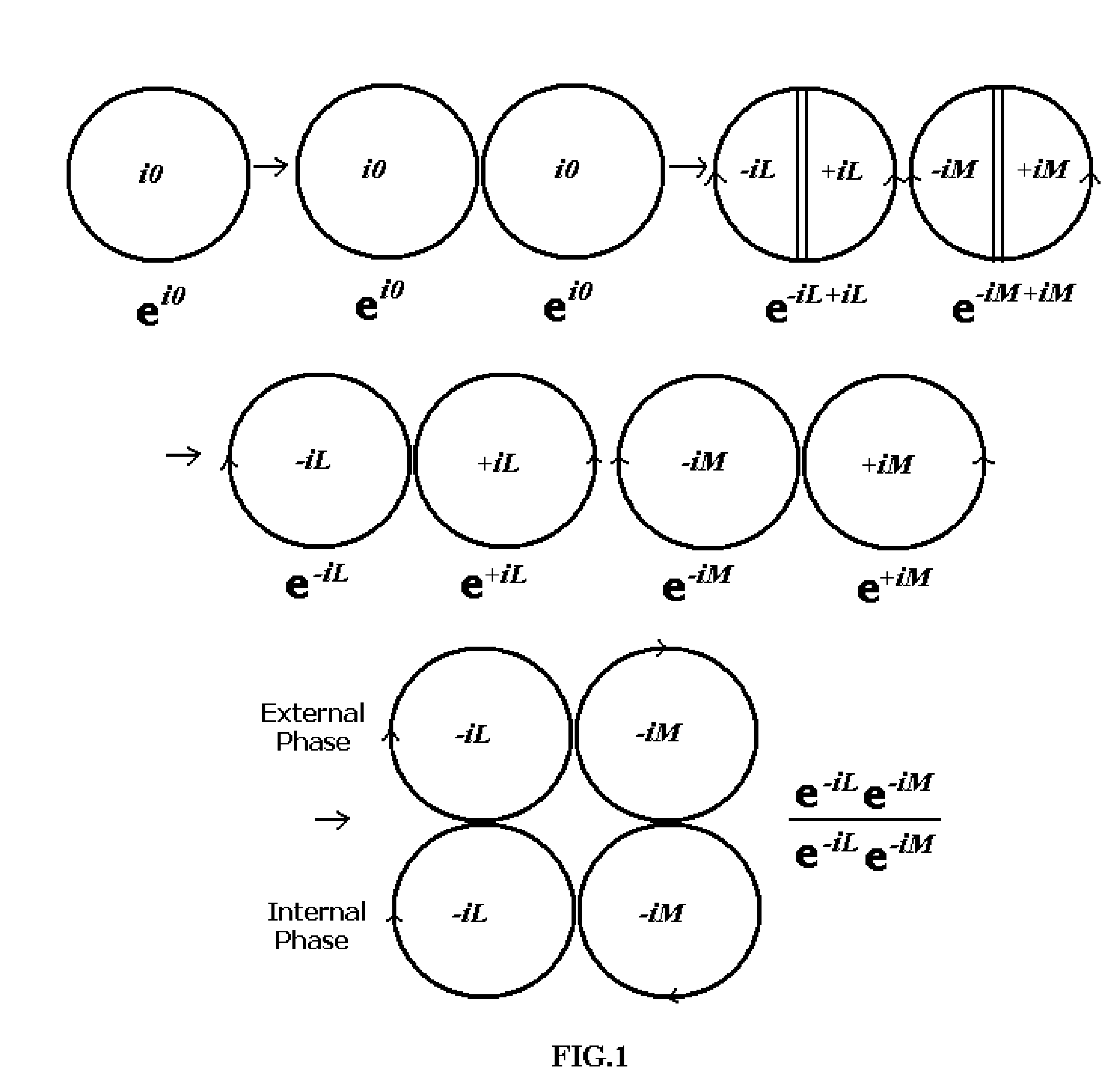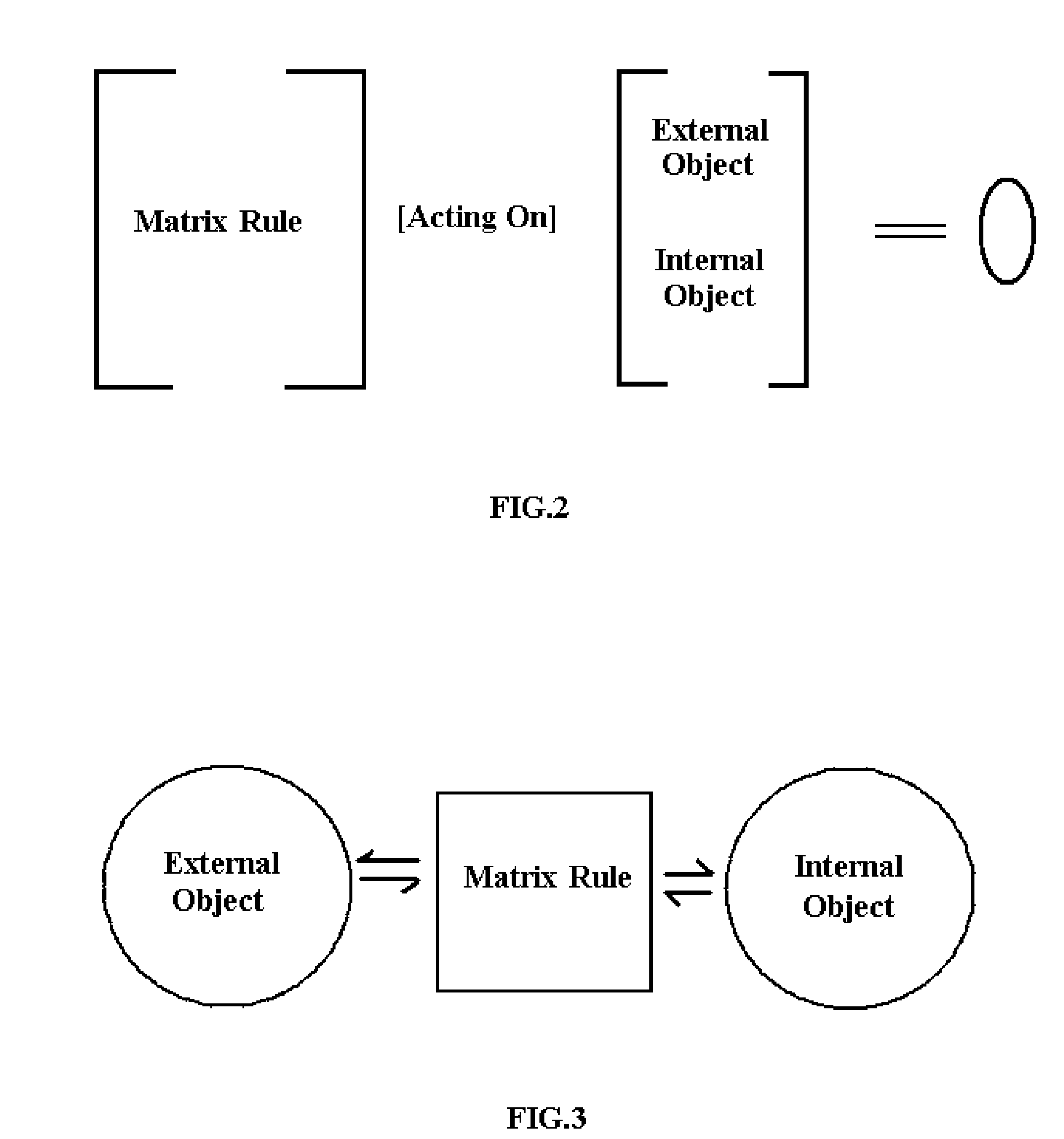Prespacetime model for generating energy-momentum-mass relationship, self-referential matrix rules and elementary particles
a spacetime model and energy-momentum-mass relationship technology, applied in the field of model for generating energy-momentum-mass relationship, self-referential matrix rules, elementary particles and composite particles, can solve the problems of no model before known, the essence and implications of quantum entanglement are still hotly debated, and the inability of quantum entanglement alone to transmit binary or classical information
- Summary
- Abstract
- Description
- Claims
- Application Information
AI Technical Summary
Benefits of technology
Problems solved by technology
Method used
Image
Examples
first embodiment
[0059]In a first embodiment, a neutron comprised of an unspinized proton in Dirac form shown in 413 of FIG. 22 and a spinized electron in Dirac form shown in 414 of FIG. 22 is created, sustained and made evolving in prespacetime as shown in mathematical expressions 415 and 416 of FIGS. 22 and 417 of FIG. 23 in which ( )p, ( )e and ( )n indicate proton, electron and neutron respectively. Further, the unspinized proton has electric charge e, the spinized electron has charge −e; (φ, A)p, (φ, A)e are respectively electromagnetic potential acting on the unspinized proton and the tightly bound spinized electron; and V is a binding potential from the unspinized proton acting on the spinized electron causing tight binding. If (φ, A)p is negligible due to fast motion of the tightly bound spinized electron, 418 is derived from 417. Experimental data on charge distribution and g-factor of the neutron support the neutron in the prespacetime model which is comprised of the unspinized proton and ...
second embodiment
[0060]In a second embodiment, hydrogen comprised of a spinized proton in Dirac form shown in 421 of FIG. 24 and a spinized electron in Dirac form shown in 422 of FIG. 24 is created, sustained and made evolving in prespacetime as shown in mathematical expressions 423 of FIGS. 24 and 424 and 425 of FIG. 25. In FIGS. 24 & 25, ( )p, ( )e and ( )h indicate proton, electron and hydrogen respectively. Further, the spinized proton has electric charge e, the spinized electron has charge −e; and (φ, A)p, (φ, A)e are respectively electromagnetic potential acting on the spinized proton and the spinized electron in FIG. 25. If (φ, A)p is negligible due to fast motion of the spinized electron in FIG. 25, 426 is derived from 425. A Weyl form of 425 and 426 are respectively 427 and 428 of FIG. 25.
V. Prespacetime Model of Ether (Aeher)
[0061]In the prespacetime model, the mathematical representation of the primordial ether in prespacetime is the Euler's number (Euler's Constant) e which makes the Eul...
PUM
 Login to View More
Login to View More Abstract
Description
Claims
Application Information
 Login to View More
Login to View More - R&D
- Intellectual Property
- Life Sciences
- Materials
- Tech Scout
- Unparalleled Data Quality
- Higher Quality Content
- 60% Fewer Hallucinations
Browse by: Latest US Patents, China's latest patents, Technical Efficacy Thesaurus, Application Domain, Technology Topic, Popular Technical Reports.
© 2025 PatSnap. All rights reserved.Legal|Privacy policy|Modern Slavery Act Transparency Statement|Sitemap|About US| Contact US: help@patsnap.com



